Hairy stone: meaning and properties
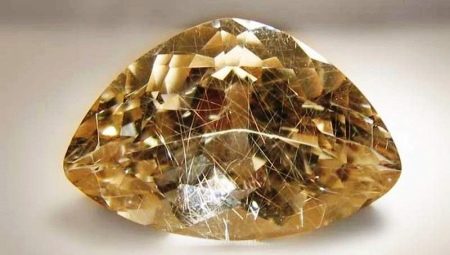
Hairy is one of the most beautiful varieties of quartz and is a translucent mineral with distinct needle-like hairs inside. The stone has a rather extraordinary appearance and stands out noticeably against the background of many minerals.
Description
Volosatik is a type of rock crystal based on silicon dioxide SiO2 with inclusions of titanium dioxide (rutile). It is these inclusions that form thin hairs chaotically located inside the mineral, making quartz original and distinctive. In most cases, needle-like inclusions are presented in the form of rays, however, sometimes minerals with intricate irregular stars and triangles are found.
In color, rutile inclusions are often golden-red or black, although from time to time there are specimens with gray, green, brown and red rays, consisting of goethite or actinolite, tourmaline, riebeckite, lepidocrocite and hornblende.
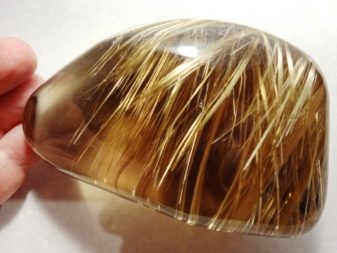

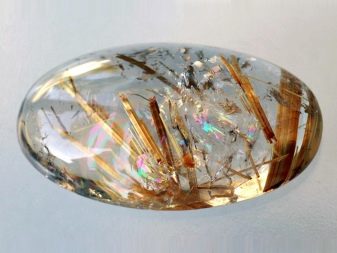
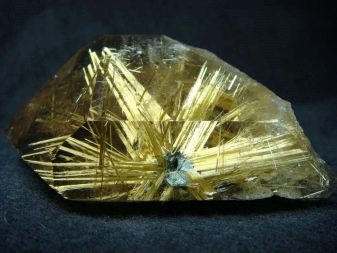
As for the physical properties of the mineral, its hardness reaches 7 units on the Mohs scale, which corresponds to the hardness of unhardened glass, and the density is 2.6-2.65 g / cm3. Quartz has a glassy, and thanks to rutile and diamond luster, it acts as a dielectric and has a transparent, well translucent structure. The stone is insoluble in alkalis, it is characterized by a concave fracture and imperfect cleavage.

Origin story
According to an ancient legend, the goddess Venus herself was involved in the appearance of the stone, who, while bathing in a mountain river, dropped a lock of golden hair into the crystal clear water.With the onset of cold weather, the water in the river froze, and the curls were frozen into the ice. The goddess liked this picture so much that she decided to immortalize it in stone. Thanks to this history, the mineral received the name "hair of Venus", which, however, is not the only unofficial name for the mineral.
For its impeccably even inner rays, it is often called the "arrows of Cupid", "arrows of love" and the hedgehog stone.
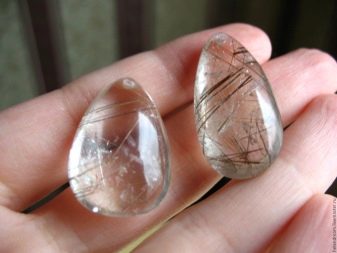
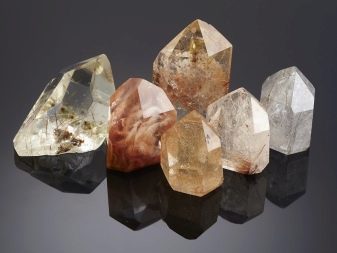
In many countries of the East, quartz with black inclusions is called "Ali's beard" and is appreciated for its spectacular appearance and high decorativeness. The stone received this name in honor of the brother of the Prophet Muhammad - Ali, who lived in the 7th century and was the spiritual enlightener of Muslims. After his death, a mosque named after him was built near Baghdad, not far from which a mineral deposit was found with black hair-inclusions inside.
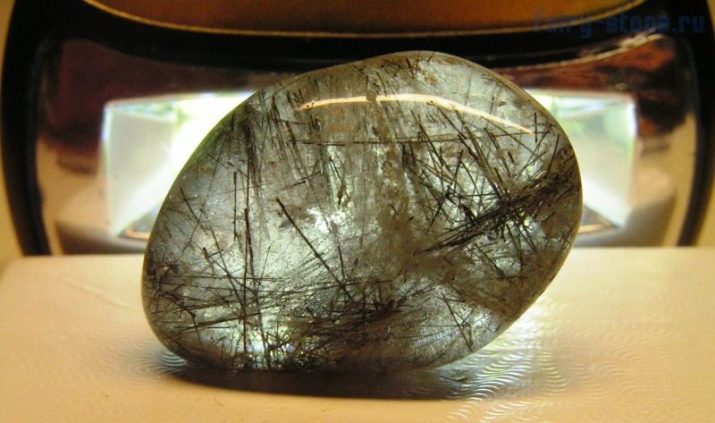
Place of Birth
Currently, the extraction of hairs for jewelry production is carried out on the territory Brazil, Australia, Norway, Pakistan, United States and Kazakhstan. In our country, in the last century, a large field was explored and developed, located in the subpolar Urals. Minerals extracted from it were widely used in jewelry and were collected by connoisseurs as collectible material.
At the moment, rutile quartz is being mined at the deposit of the Kola Peninsula.
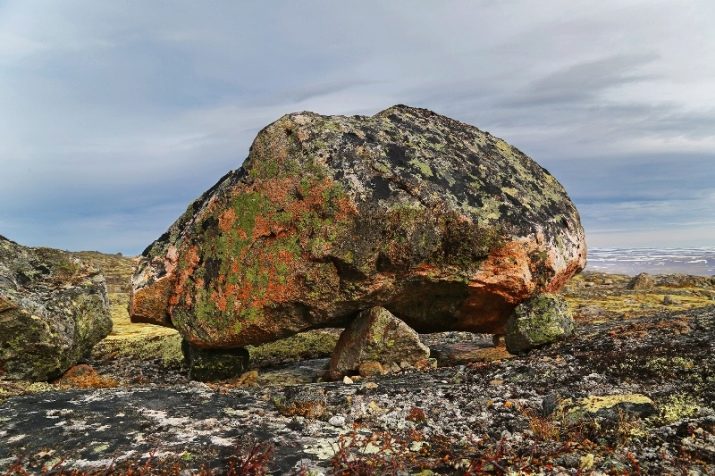
Varieties
The hairworm does not have a classification in its usual sense. This is due to the fact that two, and even more so several identical specimens, which could be distinguished into a separate class, do not exist in nature. As a type of hair worm, only sagenite can be distinguished. The mineral has hairs 2-3 mm thick, located at an angle of 60 degrees to each other. This contributes to the formation of many internal triangles, intertwining with each other.
Sagenit is considered one of the most decorative varieties, and is most often used for the manufacture of jewelry.
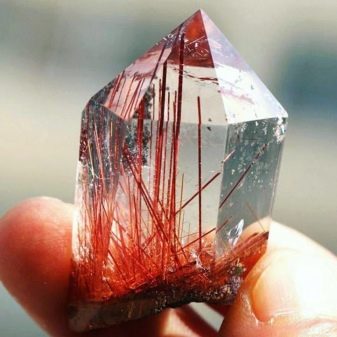

An interesting fact is that quartz, which is mined on the Kola Peninsula, is strikingly different from the minerals mined in Pakistan or Australia, and looks somewhat different. It has a low-translucent structure and is painted in a smoky color. Dense inclusions of aegirine make the stone even less transparent and give it a greenish color. Because of such an appearance that is uncharacteristic for most hairy people, scientists propose to single it out as a separate breed and not classify it as quartz.
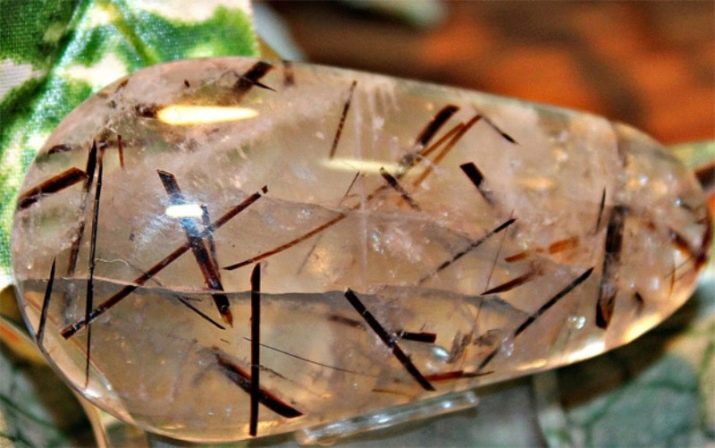
Properties
Despite the attractive appearance, the magical and healing properties of the hair worm are of much greater importance for a person than its beauty and originality.
Magical
The properties of the mineral associated with magic are based solely on myth and legend. In the Middle Ages, hairy, along with another type of quartz called "hawk eye", was actively used as a powerful love spell. It was worn as an amulet capable of attracting the gaze of persons of the opposite sex and arousing passion. The stone was in high demand among unmarried girls and single guys, and married couples firmly believed in its ability to warn spouses about future problems in relationships.

It was believed that the loss of the stone portends an early divorce, and the loss of transparency or cracking - betrayal of one of the spouses or even his death.
In addition to love magic, the mineral was used to attract positive emotions and events, as well as to attract wealth and good luck. It was also believed that the stone helps creative people to reveal their talents, and encourages people of science to new discoveries. For each specific purpose, a different hair color was used. For example, if it was required to counteract witchcraft or the induction of damage, they took a mineral with silver threads, and to attract money and good luck - with gold ones. It is believed that the hair worm cannot "show aggression" towards its owner and accumulate negative energy in itself.

Therapeutic
Along with magic, hair was often used as a remedy. So, in ancient times, with its help, they relieved the condition of people bitten by snakes, and used it as a remedy for baldness. Wearing hair as an amulet strengthened the immune system and reduced the risk of viral infections. Moreover, quartz, like any other transparent mineral, is able to improve mood, treat neuroses and fight depression.

Lithotherapists believe that the stone is capable of treating heart disease and relieving its owner of the flu and bronchitis.
Mineral possesses fortifying action and promotes longevityand women who wear hairy jewelry are less likely to suffer from hormonal disruptions than others. It is also believed that the mineral helps to neutralize the effects of radiation and fight insomnia, as well as treat infertility and impotence, and smooth wrinkles. The stone is often used for massage and meditation and is used in the treatment of the gastrointestinal tract, liver and spleen.

How to distinguish from a fake?
In general, it is unprofitable to engage in fake hairs. This is due to the not too high value of the mineral and the ease of acquiring natural specimens. However, there are still cases when a fake is passed off as a real mineral, therefore, the main differences between quartz and glass or plastic should be known.
- It is easy to scratch glass or plastic stones with a sewing needle, while needle marks will not remain on natural materials.
- If you hold quartz in your hands for a while, it will still remain cold, while glass or plastic will quickly heat up. This is due to the low thermal conductivity of the hair worm.
- The density of natural quartz is much higher than that of plastic, and therefore natural stone will weigh much more than artificial one.
- A real mineral has small bubbles in its structure, which are formed during the ingrowth of rutile into quartz and the capture of various gases and impurities.
- Due to the fact that two absolutely identical stones do not exist in nature, the beads will differ significantly from each other, and each of them will have its own individual needle pattern.
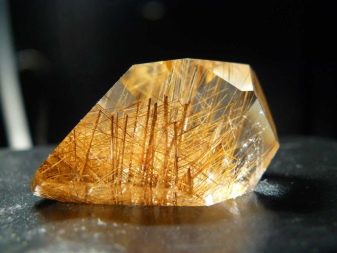
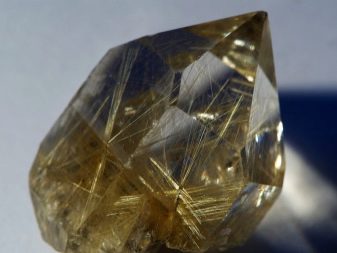
Who is it suitable for?
Hairy is suitable for representatives of almost all signs of the zodiac, except for Aries, for which it can only be considered as a decoration. The greatest effect of wearing products with a mineral is observed in Taurus, Rakov and Lvov. Therefore, if there is an urgent need to fix something in your personal life, these three signs are recommended to purchase quartz and wear it with short interruptions.
Libra can safely choose a hairy man as a talisman, and for Aquarius, buying a mineral with golden threads promises peace of mind and true love. The only condition for using hairy worms are pauses in its use.
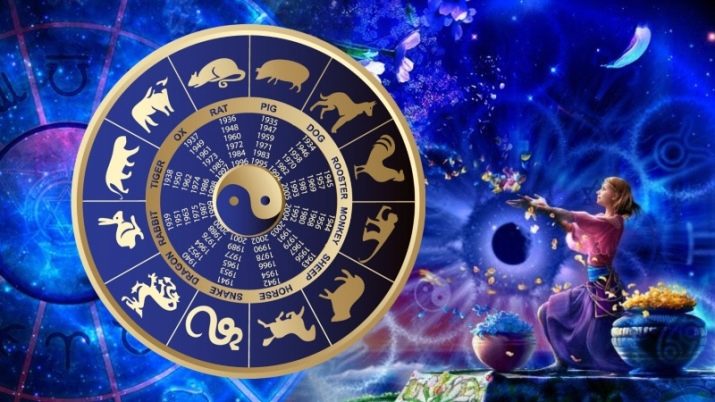
It is not recommended to wear the stone for a long time without taking it off, as it “gets tired” of a person and needs rest.
Compatibility with other stones
As with most varieties of quartz related to the element of Air, a combination with the element of Fire is recommended for the hair worm. Good compatibility is noted with heliodor, garnet, pyrite, citrine, coral, amethyst, fluorite and golden beryl. The mineral is absolutely neutral to turquoise, malachite, jasper, lapis lazuli, chalcedony stones and heliotrope. And it is extremely undesirable to have topaz, emerald, alexandrite, sapphire, chrysolite and pearls in your neighbors.
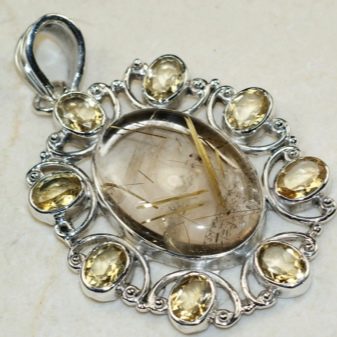
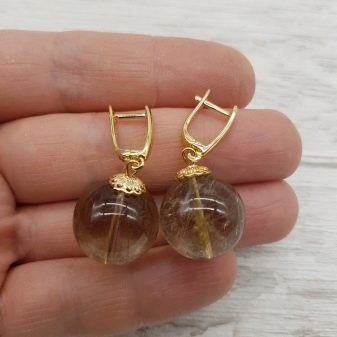
Application
In addition to magic and lithotherapy, hairwort is widely used as a jewelry and ornamental stone. A wide variety of jewelry is made from it, such as bracelets, pendants, beads, earrings and rings.Minerals mined on the Kola Peninsula are used to make vases, boxes, frames and figurines. In addition, the mineral is in high demand among collectors and can be a worthy decoration for any collection. Volosatik is also used for interior decoration and for the manufacture of esoteric paraphernalia.
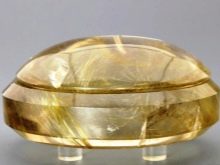

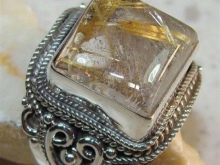
Care
In order for a product with a hairy to last as long as possible, and the mineral to retain its original appearance for a long time, it is necessary to properly care for it. To do this, you should follow a number of simple recommendations for the care of the mineral and follow the rules for storing the stone. So, it is advisable not to expose the stone to sudden temperature changes and protect it from exposure to household chemicals, and especially alkalis. Also, you should not allow impacts, weight loads and drops of the mineral onto a hard surface.
It is advisable to store hair products separately from other jewelry, since stones with a higher hardness can easily scratch the surface of the mineral.
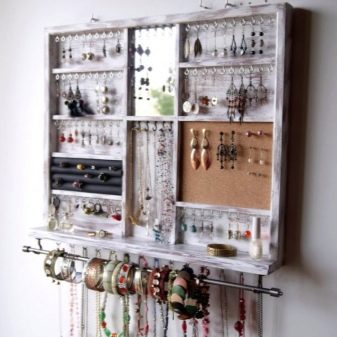
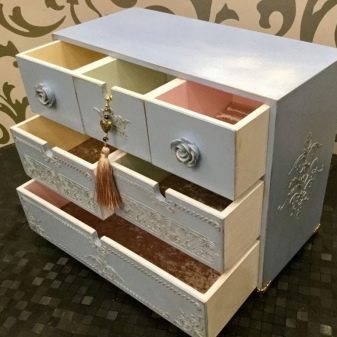
As for the care of quartz products, it is better to clean the stone with a soft cloth dipped in soapy water, and for the frame it is better to choose a special tool that is suitable directly for this metal. Using baking soda or toothpaste is inappropriate in this case, as they can scratch the frame and make the metal look dull.
An important point in caring for the hair worm is the periodic "recharge" of the mineral, which allows you to cleanse it of negative energy and prepare it for the next cycle of "work". To do this, the stone is placed under running water for 6 hours, and it is better to use spring water rather than tap water. If this is not possible, then you can use melt water, also taken from natural sources, and not from the tap.
Then the mineral is dried naturally and placed under direct ultraviolet rays for a couple of hours. At the end of the procedure, rutile quartz is considered recharged and ready for further use.
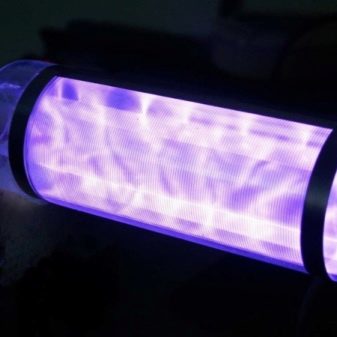
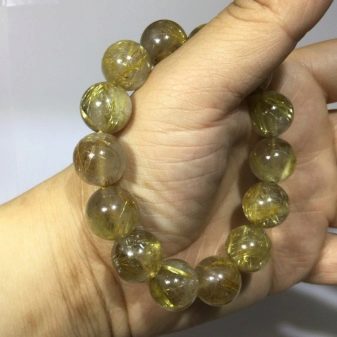
For the properties of the stone, see the next video.








